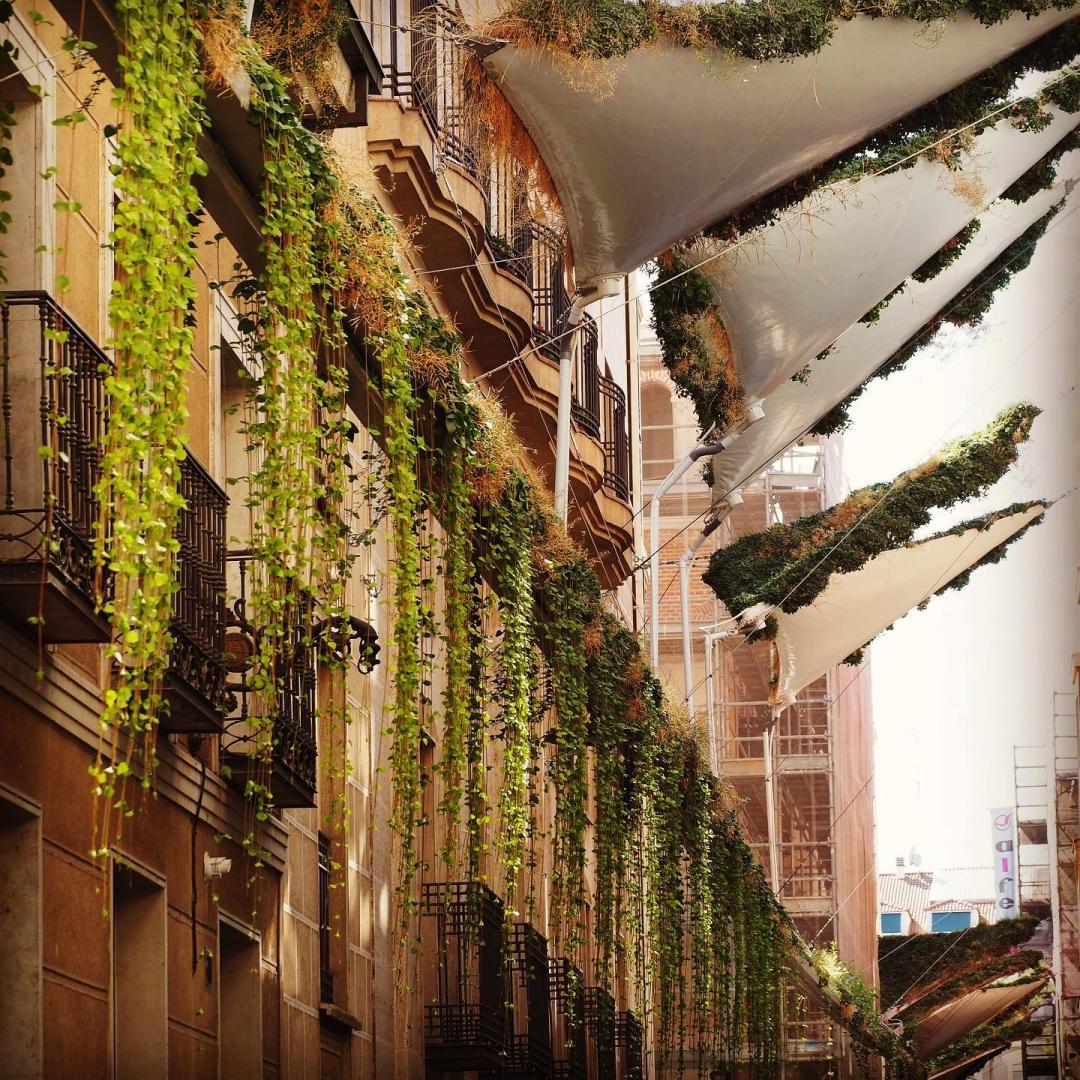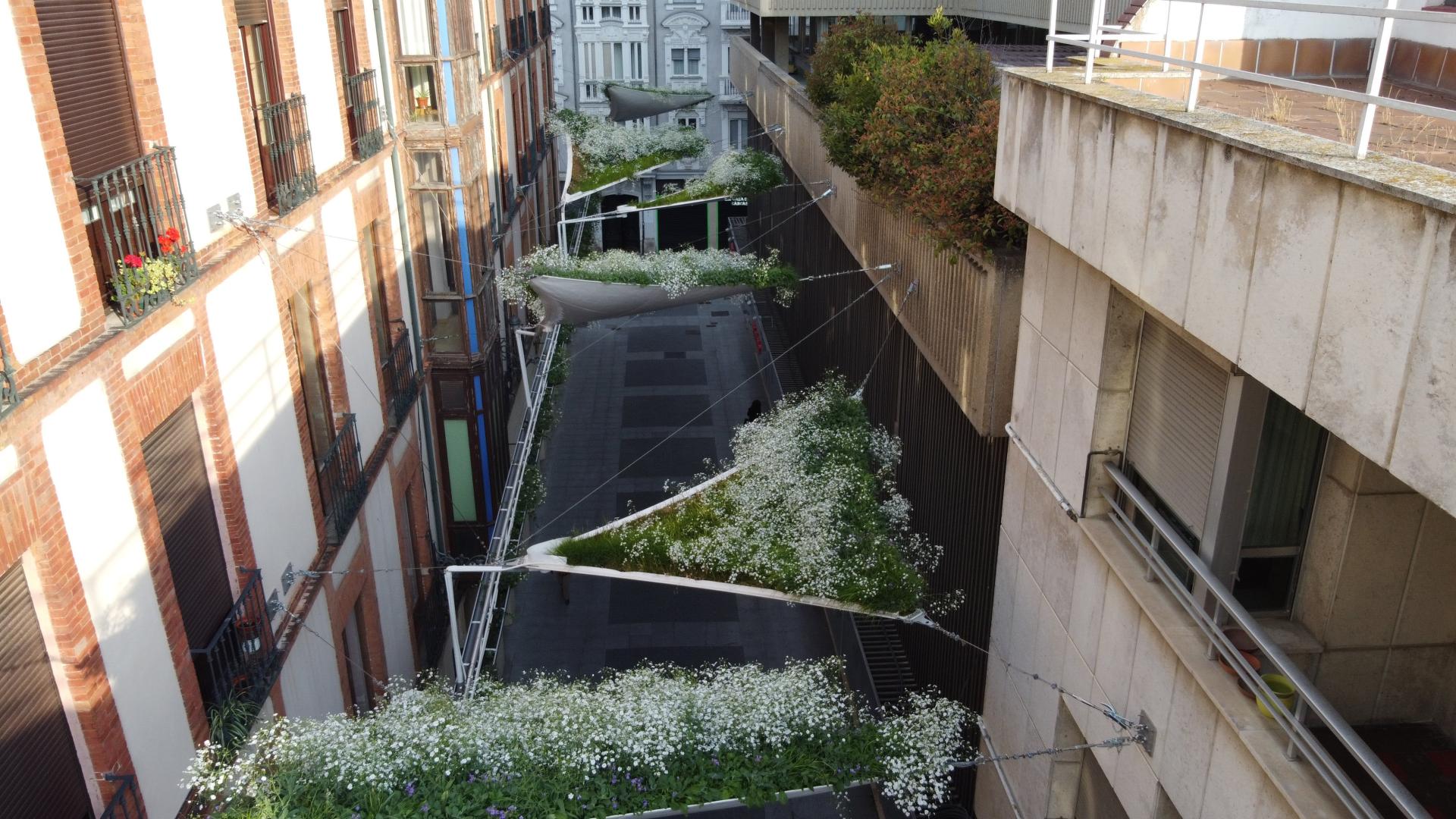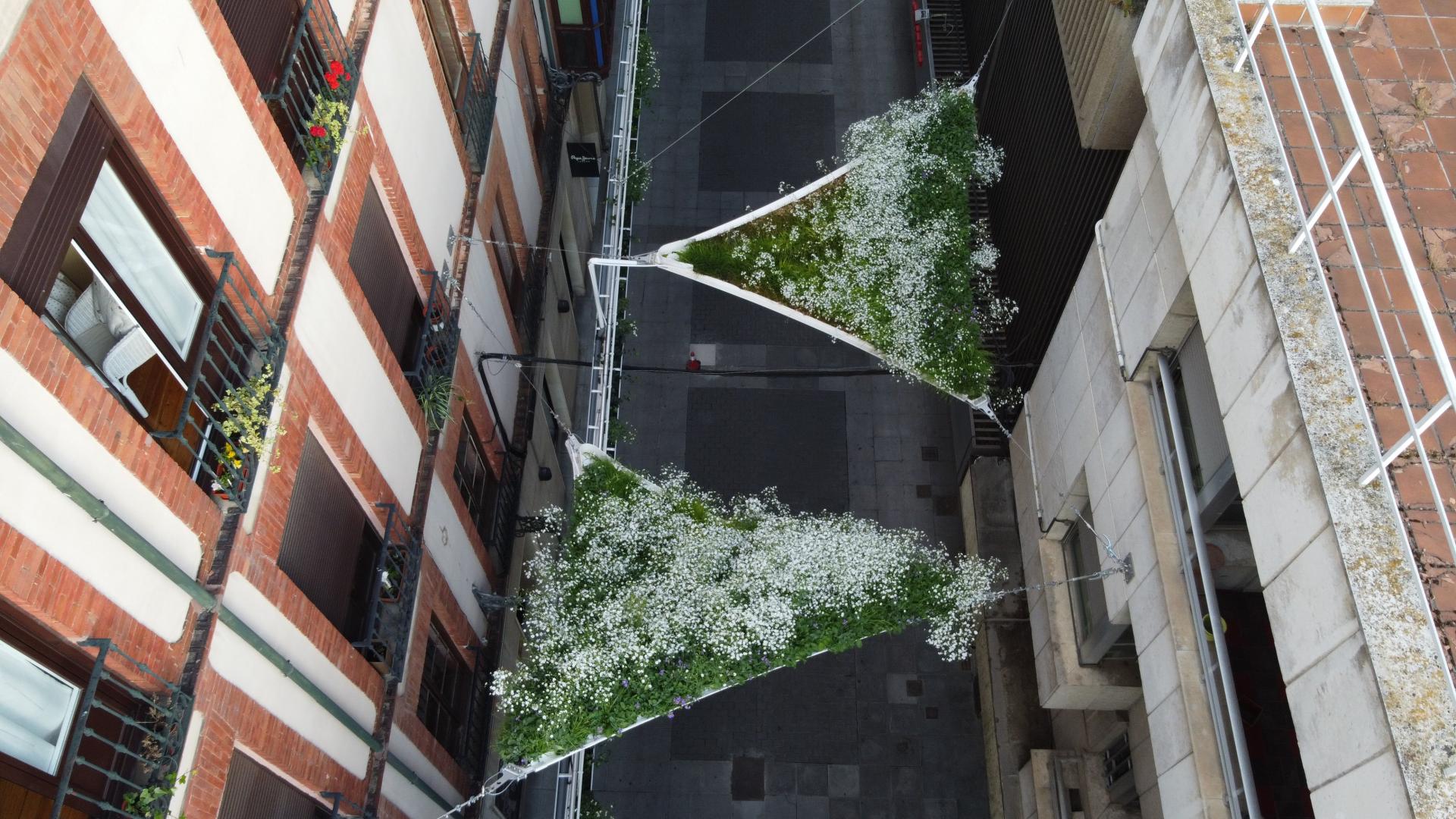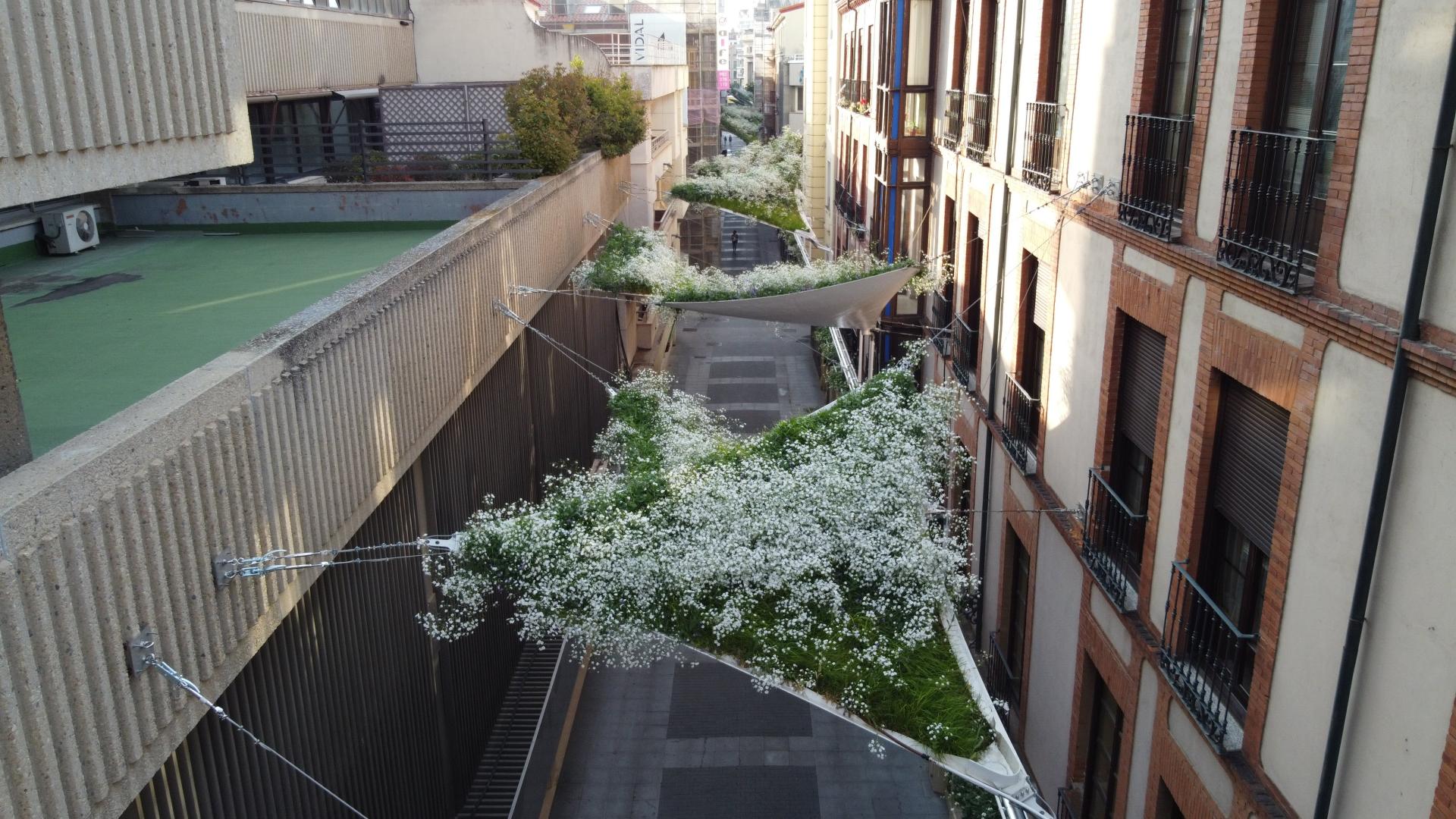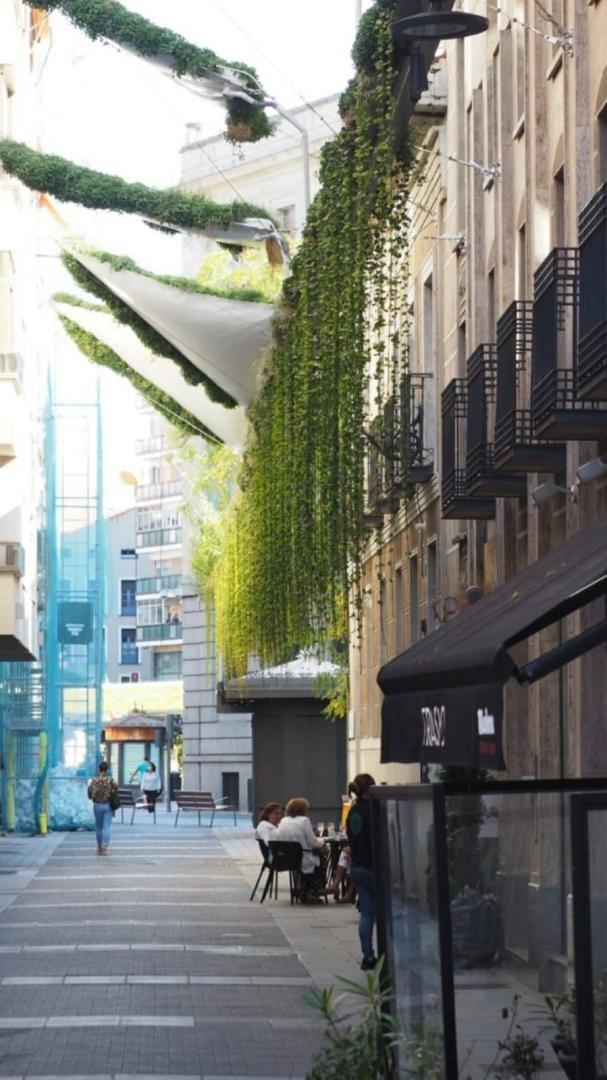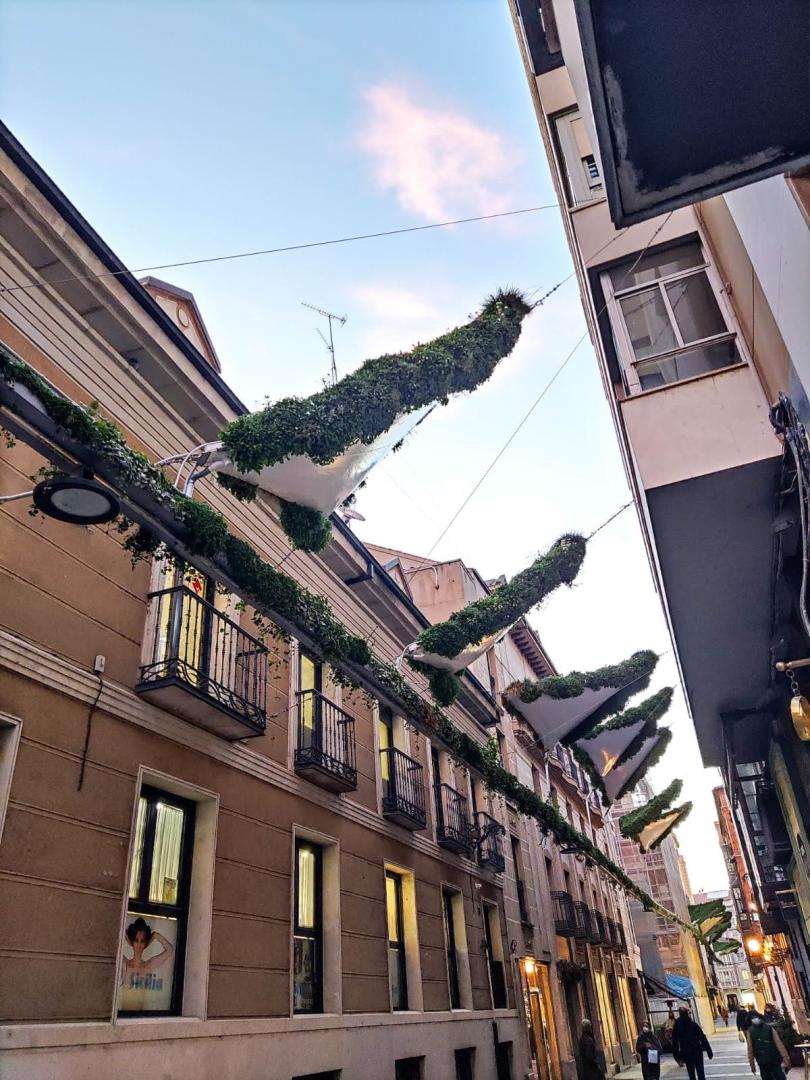Green Shades
Basic information
Project Title
Full project title
Category
Project Description
The Green Shades system is the first awning system that allows vegetation to grow by projecting seeds on its surface. It´s a lightweight structure of tensioned PVC sails that is installed on the façades, providing shade to the street. The project incorporates a beam that runs along the street, in which a pipe is integrated for water supply, water collection and lighting. The main benefit of this project is that it helps to alleviate the heat island effect of city centres.
Geographical Scope
Project Region
Urban or rural issues
Physical or other transformations
EU Programme or fund
Which funds
Description of the project
Summary
Green Shades is a unique system developed specifically for the URBAN GreenUP project, funded by the Horizon 2020 program of the European Union.
Our project is part of the creation of a green corridor that runs through the old city center. The main challenge was to design a nature-based solution to be installed in a very narrow and very long street that had no space for any kind of intervention. In this situation, we designed a system that would be suspended in height, and would not interfere with the roadway.
The Green Shades system is the first system worldwide that allows the installation of vegetal canopies. It consists of tensile textile structures, anchored to the facades on both sides of the street, on which vegetation grows. These structures are equipped with irrigation pipes that run at a height of between 7 and 5 meters. This system opens up a new range of possibilities for urban landscaping and the air conditioning of open spaces. The spaces and projects created reduce the temperature both in their surroundings and under the roof. Thanks to the evapotranspiration produced by the vegetal system, the sails act as vegetal air conditioners with a cooling capacity of 112 frigories/m². In cities, where heat is a problem, Green Shades is an optimal solution in commercial streets, terraces and squares.
Key objectives for sustainability
The overall goal of the project is to mitigate the effects of climate change, improve air quality and water management, and increase the sustainability of the city.
The main benefit is that it helps to alleviate the heat island effect in city centres. In the street where the Green Shades are installed, the temperature is reduced both in the surrounding area and under the canopy, thanks, on the one hand, to the shade cast by the sails, which avoids exposure to the sun, and on the other hand, thanks to the evapotranspiration produced by the vegetal system. As a result, the sails act as plant air conditioners, with a cooling capacity of 112 frigories/m². In addition, the sails reduce noise pollution by absorbing the waves and by reflecting the vegetation.
A second but no less important objective is the improvement of oxygen levels. The composition and the plant species are optimised for the absorption of NOX and CO2, improving the air quality of the environment.
Another objective of the project is to increase the biodiversity in the city centre where walls and buildings proliferate. The plants provide a habitat for birds, butterflies and insects, allowing them to recover in areas where construction was killing them.
And finally, the project has been designed with a water recirculation circuit. The water supply and drainage are integrated in one of the three corners of the sail. The irrigatiom tube is led to the highest side, from where the water falls by gravity soaking all the substrate. This is a hydroponic system that provides fertilizer during the watering, keeping the vegetation in perfect condition. The exeded water is collected at the lowest point.
Key objectives for aesthetics and quality
The Green Shades are designed to improve people's quality of life by revitalising an area of the city whose commercial activity has been reduced in recent years. The project improves the citizens' experience of the city centre, creating shade for users to enjoy the public space, as well as protecting them from the rain. The city centre now has an improved aesthetic appearance, with abundant vegetation on the canopies and with the added benefit of reducing the temperature in the area. One year after their installation, the street has already come back to life.
Key objectives for inclusion
Green Shadow is designed for the enjoyment of the city's residents as well as tourists. The project improves the citizens' experience of the city centre, creating shade for users to enjoy the public space, as well as protecting them from the rain. The main challenge of this project is the integration of nature in spaces where it seemed impossible before, the great flexibility and lightness of the system, makes it the perfect solution that can be adopted in any city in the world.
Results in relation to category
Green Shades is the first system worldwide that allows the installation of vegetal canopies, opening up a new range of possibilities for urban landscaping and the air conditioning of spaces covered by tensile structures. The spaces and projects created reduce the temperature both in their surroundings and under the canopy. In cities, where heat is a problem, Green Shades is an optimal solution in shopping streets, terraces and squares. The composition and the plant species are optimised for the absorption of NOx and CO2, contributing to the improvement of air quality in our cities. The lightness and ease of installation allows placement in streets where, due to lack of space or difficulty of intervention, trees or other types of vegetation cannot be placed. It’s a way of introducing nature with the minimum impact of work.
How Citizens benefit
The planted canopies project was made possible thanks to the collaboration of Valladolid City Council. The project is part of the creation of a green corridor that crosses the entire old part of the city. But the implementation of the awnings had an added difficulty, as it acted directly on the homes of the residents of the city centre. We needed to install anchors on the façades of their houses to be able to hold the sails, with the noise and annoyance that this can cause. Fortunately, we had the support of the City Council and the local residents, and the project could be carried out thanks to their collaboration.
Physical or other transformations
Innovative character
The innovative character of this project is that it allows the integration of vegetation with the minimum impact of construction work, it only needs a support to anchor the sails and allow them to be tensioned.
The Green Shades system allows the introduction of vegetation in urban areas, while keeping the public space free for the use of citizens. In this way, the revitalization of deteriorated or difficult to use urban spaces is achieved.
It is the most sustainable solution at all scales.
Learning transferred to other parties
Green Shades is a flexible system that can be adapted to different environments. The project is designed using LeafSkin® technology, a hydroponic system patented by SingularGreen that consists of a waterproof layer, sealant, distribution membrane and substrate sprayed with a mixture of seeds. The main advantage of the system with respect to other types of vertical gardens is that it eliminates the planting phase on site, which simplifies and accelerates its installation, not requiring technical personnel and reducing costs. The lightness of the system is another of its advantages, not exceeding 30 kg/m². The installation process of the sails is as follows:
1. Preparation of the sails by placing the geotextile substrate on the fabric, which already has the tensioned cables and anchors in its structure.
2. Preparation of the achorages on the facades or masts where they will be placed.
3. Anchoring of the three corners to the supports, tensioning the structure completely.
4. Connection of the irrigation system to the water supply intake.
5. Connection of the drainage to the lowest point of the canopy to collect excess water.
6. Projection of the seed mixture over the geotextile, for the subsequent growth of the plant species.
7. After five months the canopy is completely covered.

